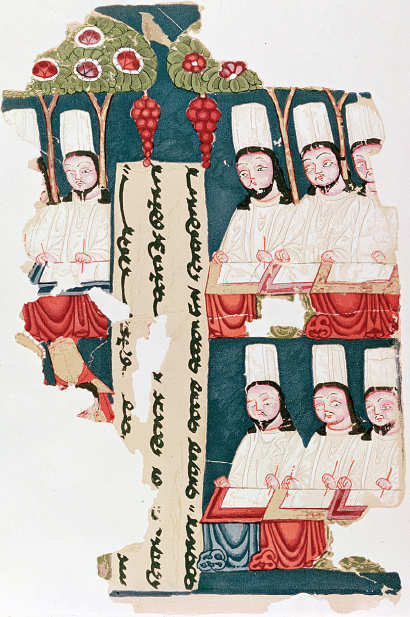Nomadic Society

Easily crossed by horses but too dry for crop agriculture, the grasslands could support only a thin population of nomadic herders. Following the seasons, they would break camp at least twice a year and move their animals to new pastures, going north in the spring and south in the fall.
In their search for water and good pastures, nomadic groups often came into conflict with other nomadic groups pursuing the same resources, which the two would then fight over. Groups on the losing end, especially if they were small, faced the threat of extermination or slavery, which prompted them to make alliances with other groups or move far away. Groups on the winning end of intertribal conflicts could exact tribute from those they defeated.
To get the products of nearby agricultural societies, especially grain, woven textiles, iron, tea, and wood, nomadic herders would trade their own products, such as horses and furs. When trade was difficult, they would turn to raiding to seize what they needed. Much of the time nomadic herders raided other nomads, but nearby agricultural settlements were common targets as well. The nomads’ skill as horsemen and archers made it difficult for farmers and townsmen to defend against them.
Political organization among nomadic herders was generally very simple. Clans — members of an extended family — had chiefs, as did tribes (coalitions of clans). Leadership within a group was based on military prowess and was often settled by fighting. Occasionally a charismatic leader would emerge who was able to extend alliances to form confederations of tribes. Large confederations rarely lasted more than a century or so, however, and when they broke up, tribes again spent much of their time fighting with each other.
The three most wide-